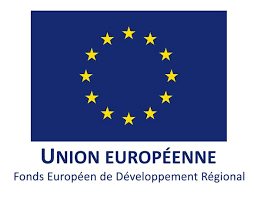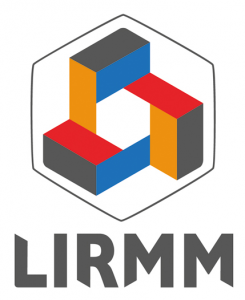Combinatorial Geometries: Matroids, Oriented Matroids and Applications
Géométries combinatoires : matroïdes, matroïdes orientés et applications
24 – 28 September 2018
|
Organizing Committee
Comité d’organisation Emeric Gioan (LIRMM Montpellier) |
Scientific Committee
Comité scientifique Joseph Bonin (The George Washington University) |
|
The structure of matroids was introduced by H. Whitney in 1935 by keeping the main combinatorial properties of the linear dependency in vector spaces. From the geometric point of view matroids can be considered as a generalisation of projective geometries. Numerous natural examples can be constructed, from vector spaces, fields (algebraic dependencies), groups, ordered sets, graphs, etc. The first matroids applications were essentially in combinatorics and in close related topics as discrete optimazation, linear programming, etc. Since thirty years ago, matroids application arise in different domains of mathematics. Among the most significant are in topology, grassmannian stratifications, discrete geometry, polytopes, arrangement of hyperplanes, etc. These applications often use the finest structure of oriented matroids based on the algebra of threes signs 0, > 0 and < 0, developped from the seventies.
Matroids and oriented matroids are topics with a significant research activity in a continual evolution. Let us mention the more than 310 papers that can be found in MathSciNet containing the word matroid in the title between 2013 and September 2016. We also point out that the theories of matroid and oriented matroids are subjects of the subsections 05B35 and 52C40 in the AMS classification. This meeting fits within the series of four other international workshops at CIRM with some years slot between them (1991, 1999, 2005, 2013). This meeting will follow a similar model as used in the highly successful CIRM workshops mentioned above. We intend to bring together researchers working in matroids and oriented matroids, including some of the main protagonists in the different topics as : This meeting will bring together mathematicians working in these areas (about 50 specialists, plus some students) with the intention to meet together, exchange ideas, and use recent advances to create new results on the extended grounds. |
La structure de matroïde a été introduite par H. Whitney en 1935 en retenant les principales propriétés combinatoires de la dépendance linéaire dans les espaces vectoriels. Du point de vue géométrique, les matroïdes peuvent être considérés comme une généralisation des géométries projectives. De nombreux exemples naturels sont construits à partir des espaces vectoriels, des corps (dépendances algébrique), des groupes, des ensembles ordonnés, des graphes, etc. Les applications des matroïdes ont d’abord été essentiellement situées en combinatoire et dans les domaines proches – optimisation discrète, programmation linéaire, etc. Depuis une trentaine d’années, des applications apparaissent dans des domaines très divers. Les plus significatives concernent, en topologie, la stratification des grassmanniennes, en géométrie discrète, les polytopes, en particulier les triangulations, et les arrangement d’hyperplans. Ces applications utilisent souvent la structure plus fine de matroïdes orientés fondée sur l’algèbre des trois signes 0, > 0 et < 0, développée depuis les années 1970.
Les matroïdes et les matroïdes orientés sont des domaines avec une très importante activité de recherche et en développement et évolution constants. Mentionnons les plus de 310 entrées, entre 2013 et septembre 2016, que l’on trouve dans MathSciNet contenant le mot matroïde dans le titre. Et signalons que la théorie des matroïdes et la théorie des matroïdes orientés sont respectivement les sujets des sous-sections 05B35 et 52C40 de la classification AMS. Le présent colloque s’inscrit `a la suite de quatre colloques internationaux au C.I.R.M., espacés de plusieurs années (1991, 1999, 2005, 2013). Son propos est de présenter et de discuter les récents développements de matroïdes et matroïdes orientés, et leurs principales applications, notamment les suivants : Il s’agira d’une rencontre internationale entre quelques dizaines de spécialistes de ces sujets, dont des chercheurs particulièrement renommés, et dont des étudiants en thèse. |
Karim Adiprasito (The Hebrew University of Jerusalem) Combinatorial Hodge and Lefschetz theory
Laura Anderson (Binghamton University, SUNY) Vectors of matroids over hyperfields (pdf)
Federico Ardila (San Francisco State University) The geometry of geometries (pdf)
Spencer Backman (The Hebrew University of Jerusalem) Geometric Bijections for Regular Matroids, Zonotopes, and Ehrhart Theory (pdf)
Kristóf Bérczi (Eötvös Loránd University) Matroidal maximum term rank (pdf)
Jürgen Bokowski (TU Darmstadt) From a combinatorial input to a polyhedral realization, Hurwitz’s regular map of genus 7 (pdf)
Joseph Bonin (The George Washington University) Delta-matroids as subsystems of sequences of Higgs lifts (pdf) – VIDEO –
Nathan Bowler (University of Hamburg) Representing matroids over hyperfields
Rutger Campbell (University of Waterloo) Representable orientable matroids that are not real-representable (pdf)
Marcel Celaya (Georgia Tech) Polyhedral representations of oriented matroids (pdf)
Anastasia Chavez (University of California, Davis) Dyck Paths and Positroids from Unit Interval Orders (pdf)
Victor Chepoi (Aix-Marseille Université) COMs: Complexes of Oriented Matroids
Csongor Csehi (Budapest University of Technology and Economics) Sufficient condition for almost irreducibility (pdf)
Ilda Da Silva (University of Lisbon) How many cubes are orientable? (pdf) – VIDEO –
James Davis (Indiana University) Topological Hyperfields and Hyperfield Grassmannians (pdf)
Jesus De Loera (University of California, Davis) Tverberg’s theorems with Altered Nerves (pdf) – VIDEO –
Anna De Mier (UPC Barcelona) Approximating clutters with matroids (pdf) – VIDEO –
Emanuele Delucchi (University of Fribourg) Realization spaces of matroids over hyperfields
Galen Dorpalen-Barry (University of Minnesota) Characteristic polynomials and chambers for cones in hyperplane arrangements (pdf)
Michael Falk (Northern Arizona University) Pairs of topes (pdf)
Alex Fink (Queen Mary University of London) Some cryptomorphisms for valuated matroids and matroids over rings
Gary Gordon (Lafayette College) and Liz McMahon (Lafayette College) Generalizations of Crapo’s Beta Invariant (pdf) – VIDEO –
Hiroshi Hirai (University of Tokyo) Uniform semimodular lattice, valuated matroid, and Euclidean building
Zur Izhakian (University of Aberdeen) Supertropical algebra and representations
Viktória Kaszanitzky (Budapest University of Technology and Economics) Highly connected rigidity matroids have unique underlying graphs (pdf)
Lukas Kuhne (The Hebrew University of Jerusalem) Parallel iterators and a database for integer root matroids
Csaba Király (Eötvös Loránd University Budapest) Packing arborescences with matroid constraints via matroid intersection (pdf)
Kolja Knauer (Aix-Marseille Université) Tope graphs of Complexes of Oriented Matroids (pdf)
Jim Lawrence (George Mason University) Concatenation (pdf) – VIDEO –
Gaku Liu (Max-Planck-Institut) Cubical Pachner moves and cobordisms of immersions (pdf)
Goran Malic (Zagreb School of Economics And Management) Delta-matroids of dessins d’enfants and an action of the absolute Galois group Gal(Q) (pdf)
Luca Moci (MJ-PRG Paris) Graded bialgebras and deletion-contraction invariants (pdf)
Iain Moffatt (Royal Holloway University of London) Tutte polynomials and bialgebras (pdf)
Steven Noble (Birkbeck University of London) Excluded Minor Results for Vf-Safe Delta-Matroids (pdf)
James Oxley (Louisiana State University) A matroid extension result (pdf) – VIDEO –
Arnau Padrol (Sorbonne Université) Back and forth with Gale duality
Rudi Pendavingh (Technische Universiteit Eindhoven) Matroids over Skew Hyperfields (pdf)
András Recski (Budapest University of Technology and Economics) Generalized matroid matching — a survey (pdf)
Raman Sanyal (Institut für Mathematik Goethe-Universität Frankfurt) Cone valuations, Gram’s relation, and zonotopes
Chi Ho Yuen (Georgia Tech) More on Geometric Bijections and Reversal Systems (pdf)








